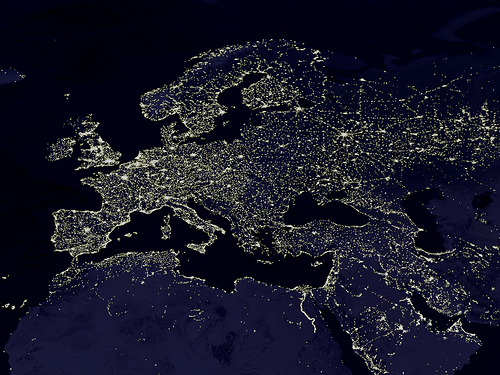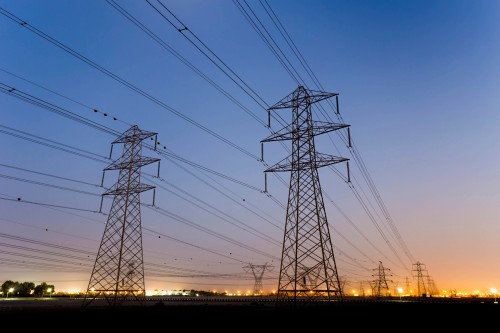Electricity price forecasting in Europe


The electricity price forecasting according to a report of the European Union on energy and greenhouse gases expected to continue rising until 2020, due to investments being made in renewable energy and the rise in the price of fossil fuels. According to the electricity price forecasting is expected to, thereafter, these investments begin to bear revenues and lower electricity price. It also provides for the report to significantly reduce emissions of greenhouse gases, although well below the targets set by the EU itself.
The changes being experienced by the power generation sector require a large investment in capital intensive, and investments in transmission and distribution systems. This will have an upward effect on prices of electricity and energy system costs in the transition period until 2020, bolstered by rising prices of fossil fuels.
It is the main conclusion of the «Energy, transport and GHG Emissions trends to 2050» report by the European Union, which makes forecasts up to 2050 on energy consumption, electricity prices, and emissions of greenhouse gases.
Beyond 2020, however, electricity prices will stabilize and even decrease. A general effect on the total costs of the energy system is that they become more intensive in capital (i.e., that will require relatively more capital work) over time. After undergoing all the structural adjustments to meet the goals and policies of 2020, the total costs of the energy system will grow more slowly than GDP, which will lead to the decrease of the ratio between the costs of the system and GDP in the period 2020-50.
In addition, the massive deployment of renewables to achieve the 2020 targets will result in a considerable reduction in external energy dependence.
In the long however, the limited availability of indigenous fossil fuels (due to exhaustion thereof), among other reasons, lead to a further increase of net energy imports (after 2035). This will affect mainly natural gas; according to the projection of the experts will have a crucial role in reducing emissions, such as support for the variability of renewables.
The report explains that it is expected that the portfolio of policies and objectives it has adopted so far the EU bring significant changes in the energy system relative to past trends. The key policies are:
- Measures to reduce emissions of greenhouse gases (GHGs) as the system of emissions trading (EU ETS).
- Efforts to achieve the desired quota of renewable sources of energy.
- Improved energy efficiency, including carbon dioxide standards for vehicles.
These last two measures strongly support GHG reduction, with a large number of synergies and also some overlap, for example, with respect to the bearish effect of the penetration of electricity from renewable and electricity savings ETS prices. This has been taken into account when designing GHG binding targets for 2020.

At the same time, the supply of competitive energy for businesses and affordability of energy use is the key to economic and social development in the EU issues, the report said. Therefore, scenario analysis has also focused on relevant indicators in this regard, showing the general evolution and possible trade-offs. The document also addresses security issues related to energy.
GHG reduction is advancing in all sectors, say the conclusions, but the decarbonization is particularly strong in the power generation, given the large number of possibilities for decarbonization in this sector, and despite the trend toward using more electricity. In fact, the main feature of future energy systems of the EU is the significant reduction in carbon intensity (CO2 emissions per unit of GDP) of power generation.
Another key feature is the decoupling of energy consumption compared to GDP growth. Overall, despite the EU economy will have grown by 78% in 2050 compared to 2010, there will be a decrease in total energy consumption of 8%.
Until 2020

The period until 2020 includes the most radical transitions due to legally binding targets of the Energy and Climate Package 20-20-20 and the provisions of the Energy Efficiency Directive, among other regulations.
The projection indicates that the measures contained in the Directive, combined with the mandatory targets for renewables, the ETS program, and other national and European measures, coupled with the sharp rise in prices of fossil fuels, induce energy savings in the order of 17 % in 2020 compared with 2007. The share of renewable targets would be achieved, and even exceed slightly.
In terms of emissions of greenhouse gases, the target levels exceed the EU level. In 2020 GHG emissions will fall by 24% compared to 1990; in 2030 and will fall 32% over the base year, and by 2050, 44%. However, this significant decrease will still considerably below the EU target by 2050 (80-95%).
Beyond 2020, additional fee of renewable or political efficiency objectives are not set, but efficiency measures already planned reductions continue getting energy to 2030 and beyond. Energy consumption in 2030 will be 21% lower than in 2007 (the reference point).
On the other hand, the continuation of the ETS, and therefore the large decrease in emission allowances throughout the period analyzed, will be an important engine for the penetration of renewables, energy efficiency and emission reduction.
